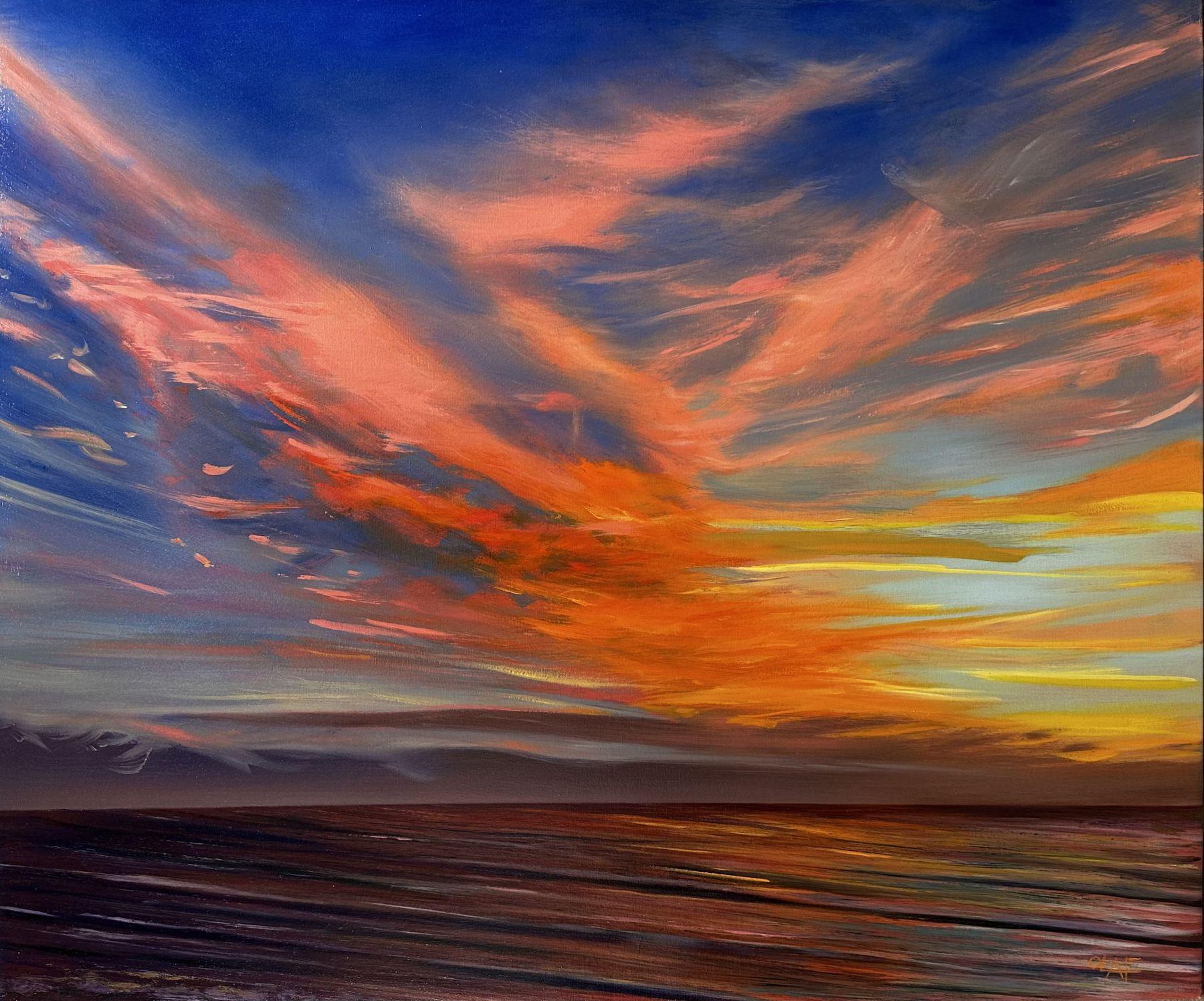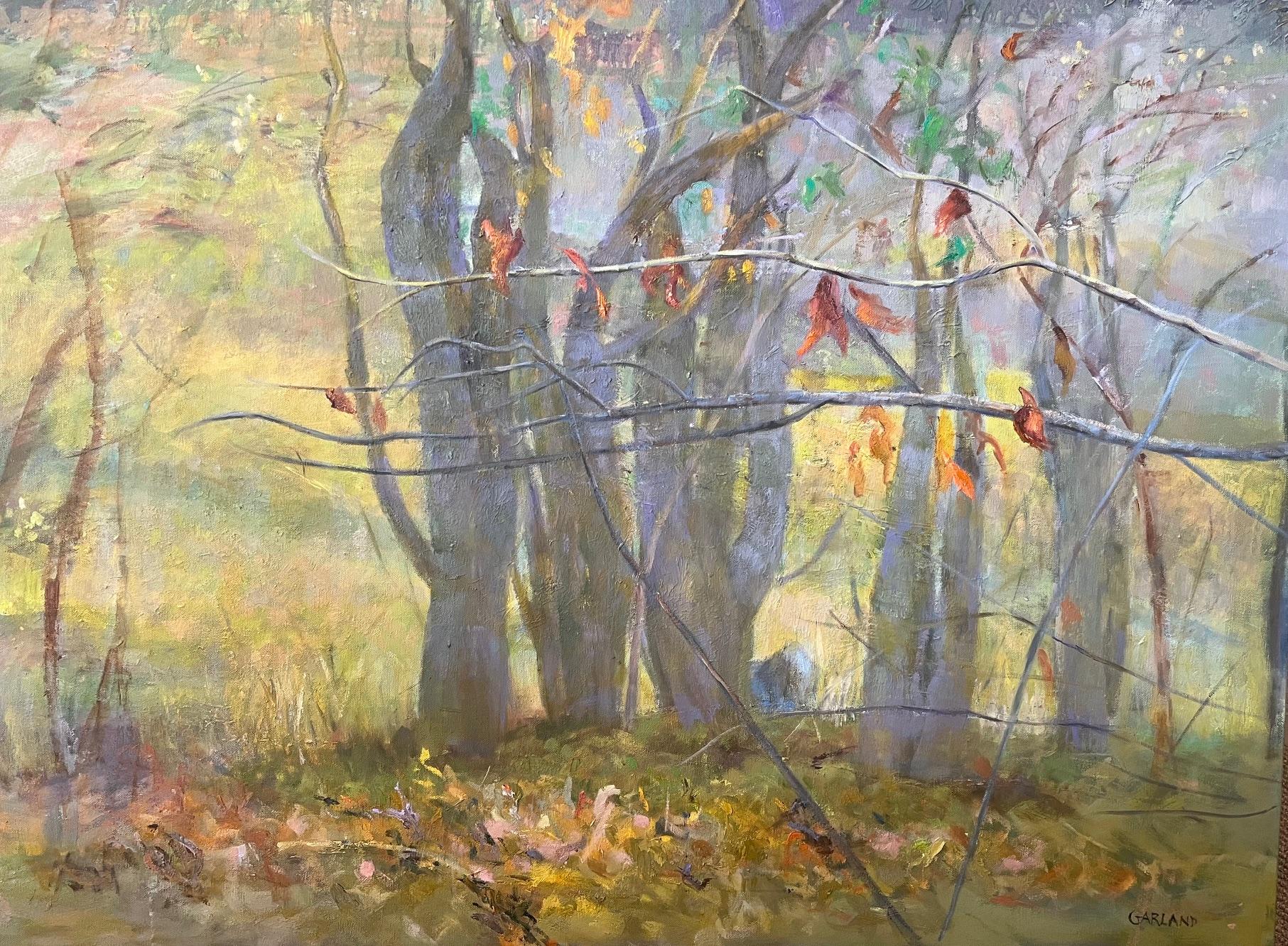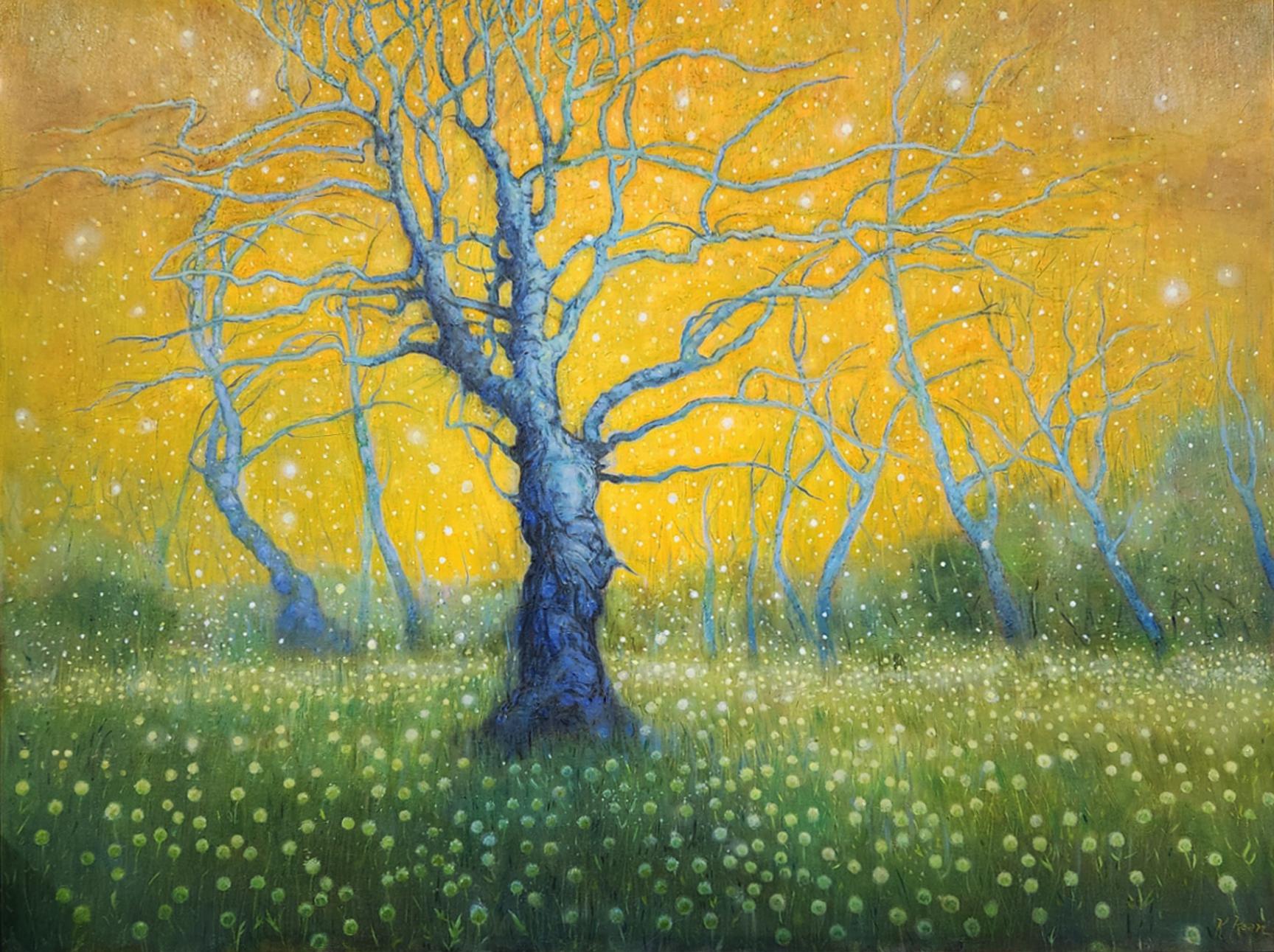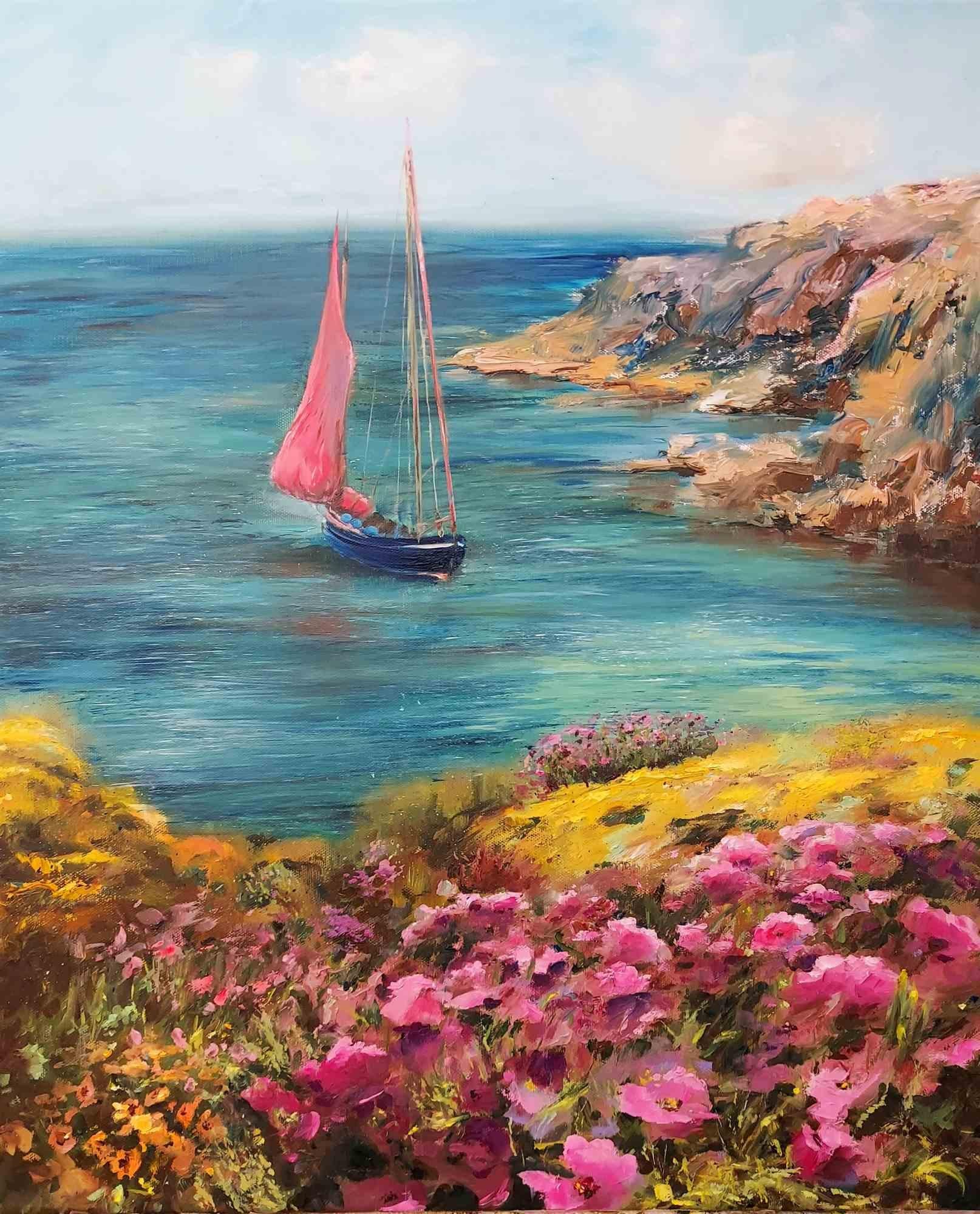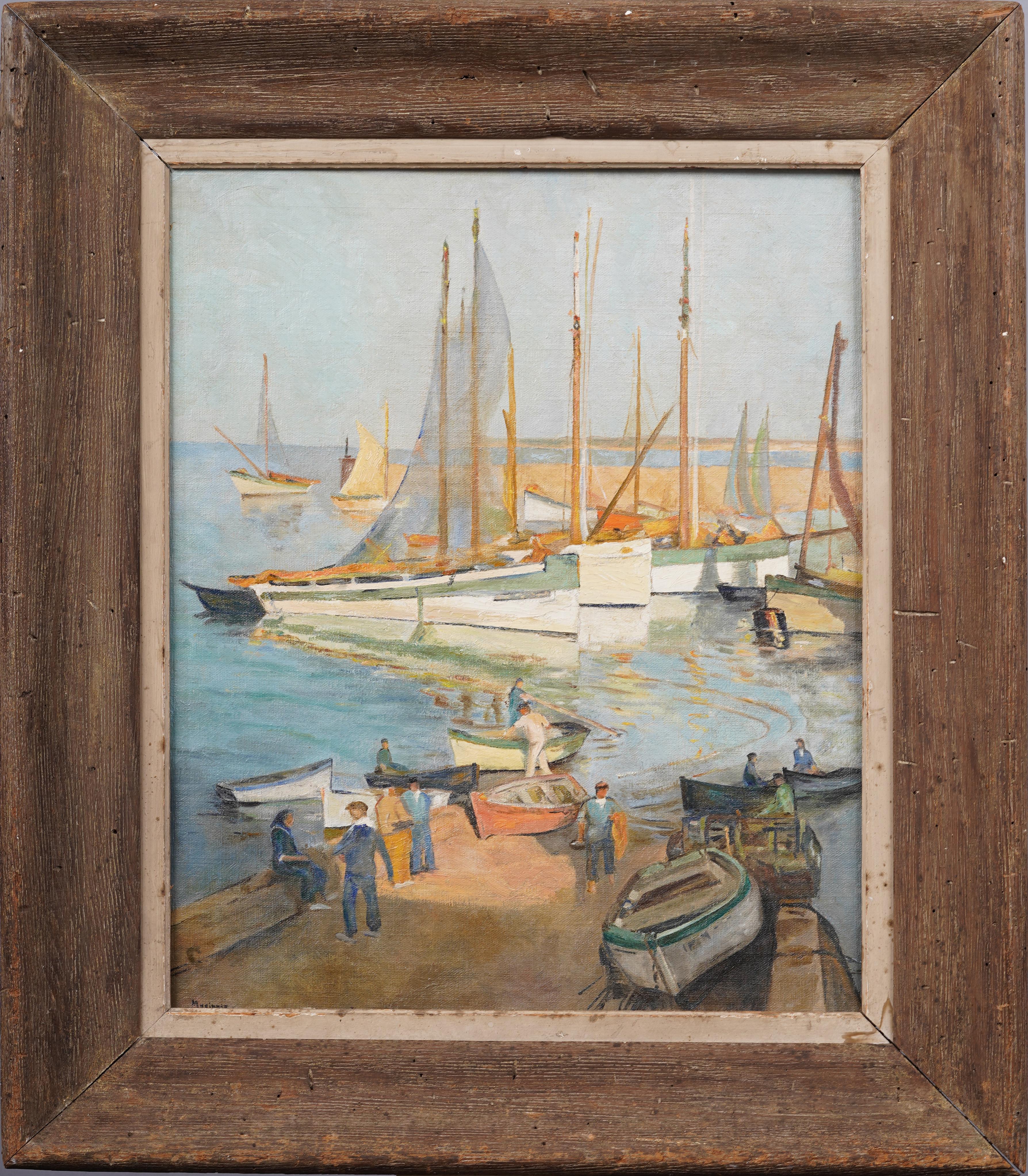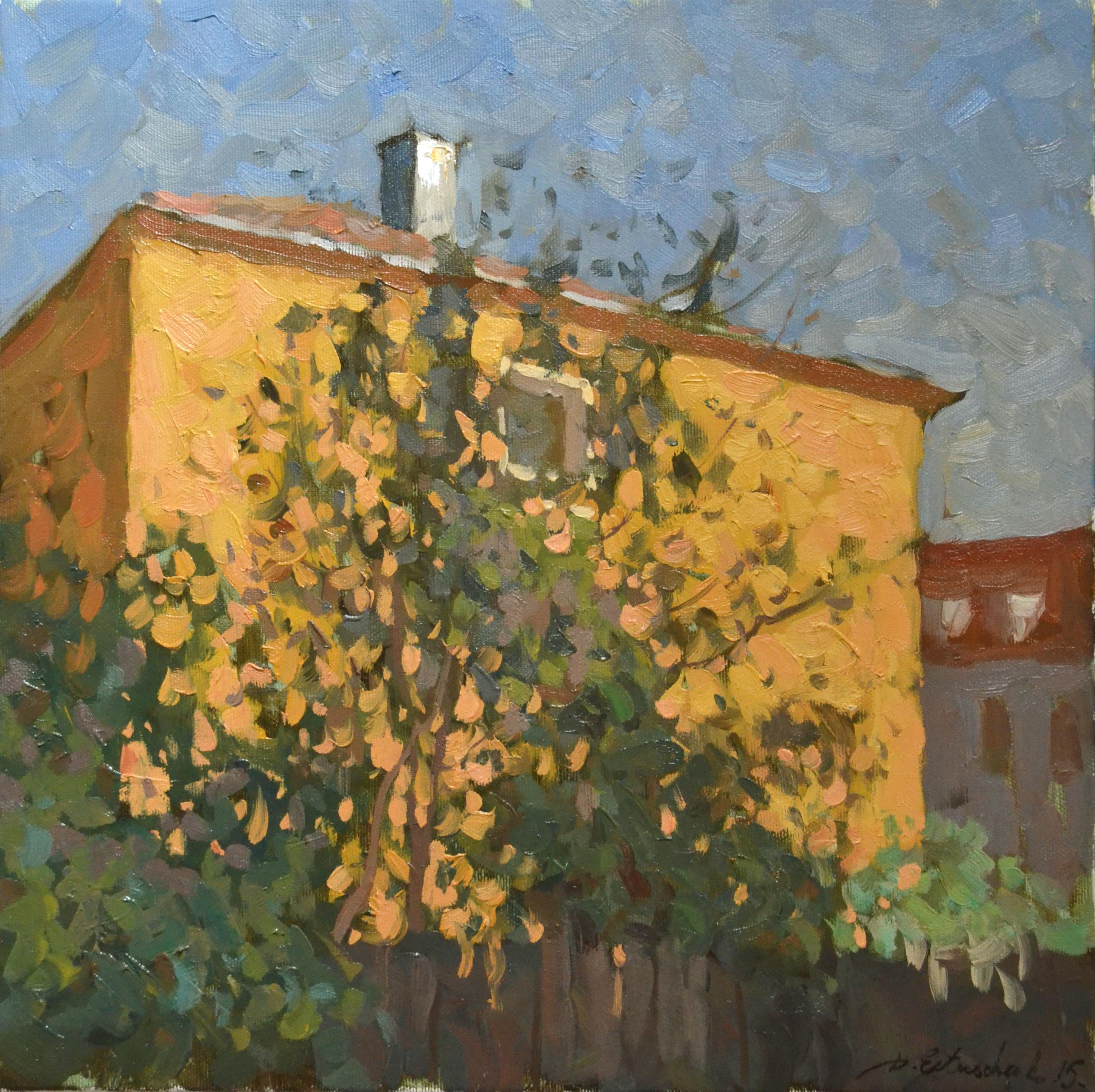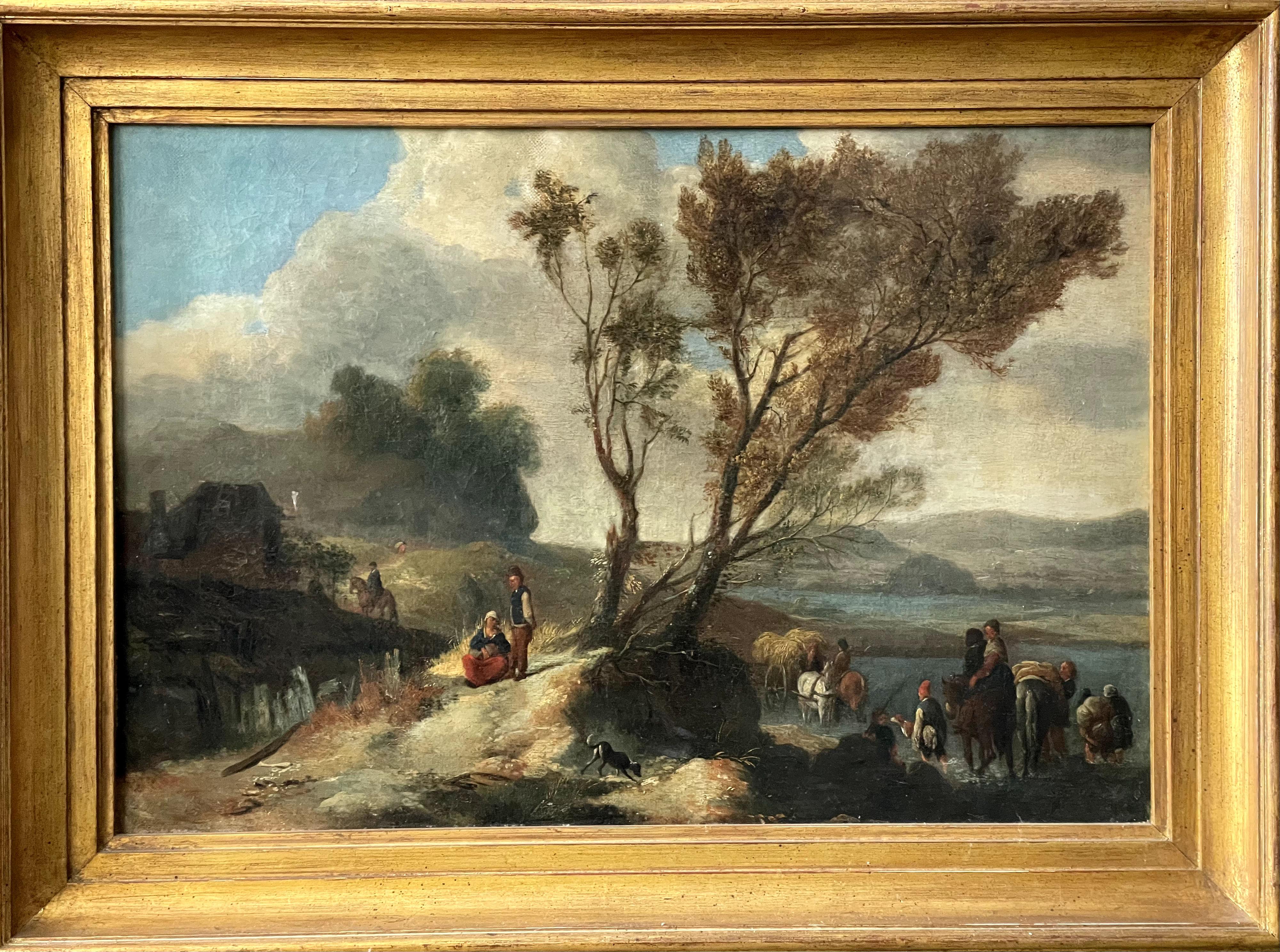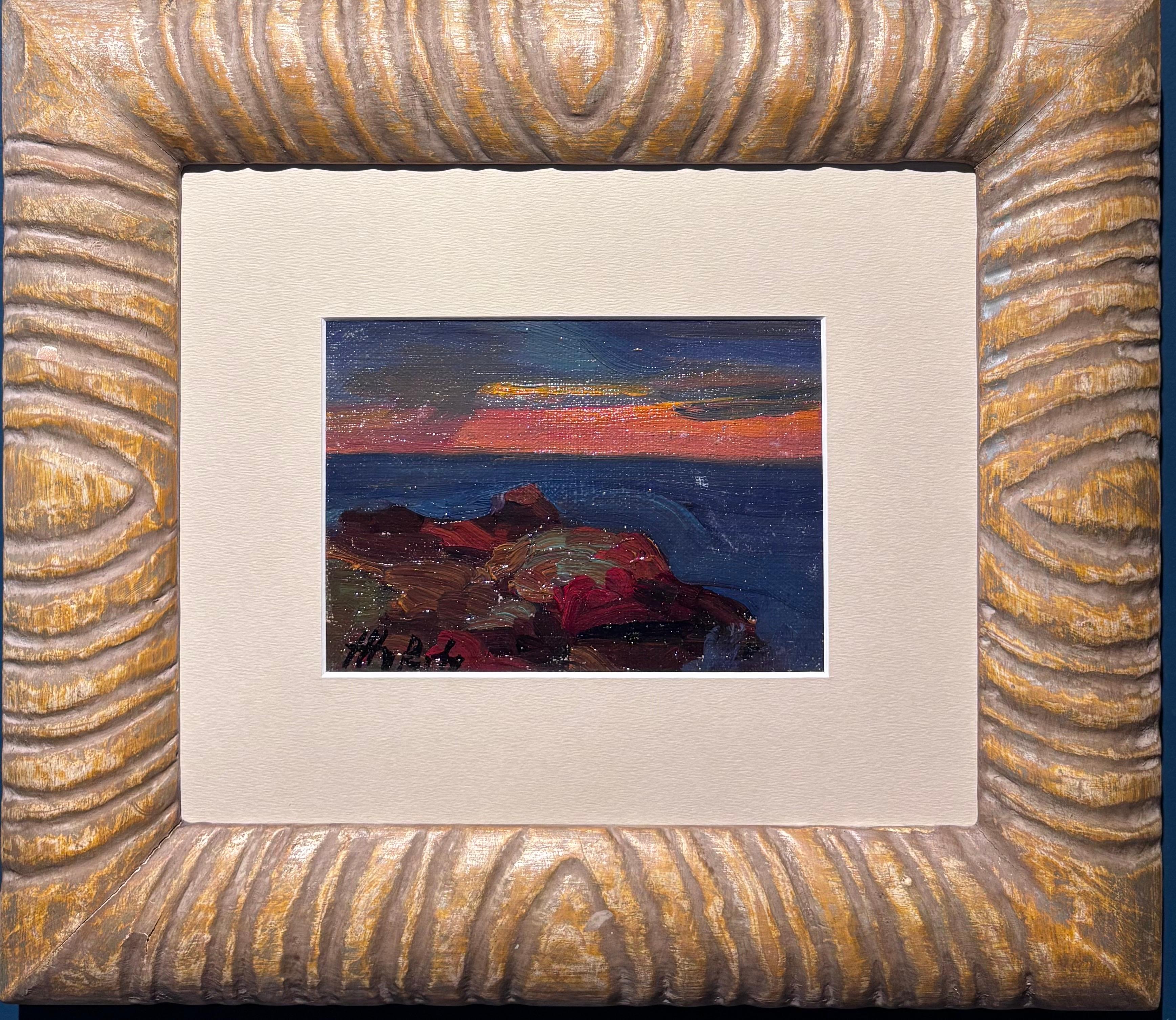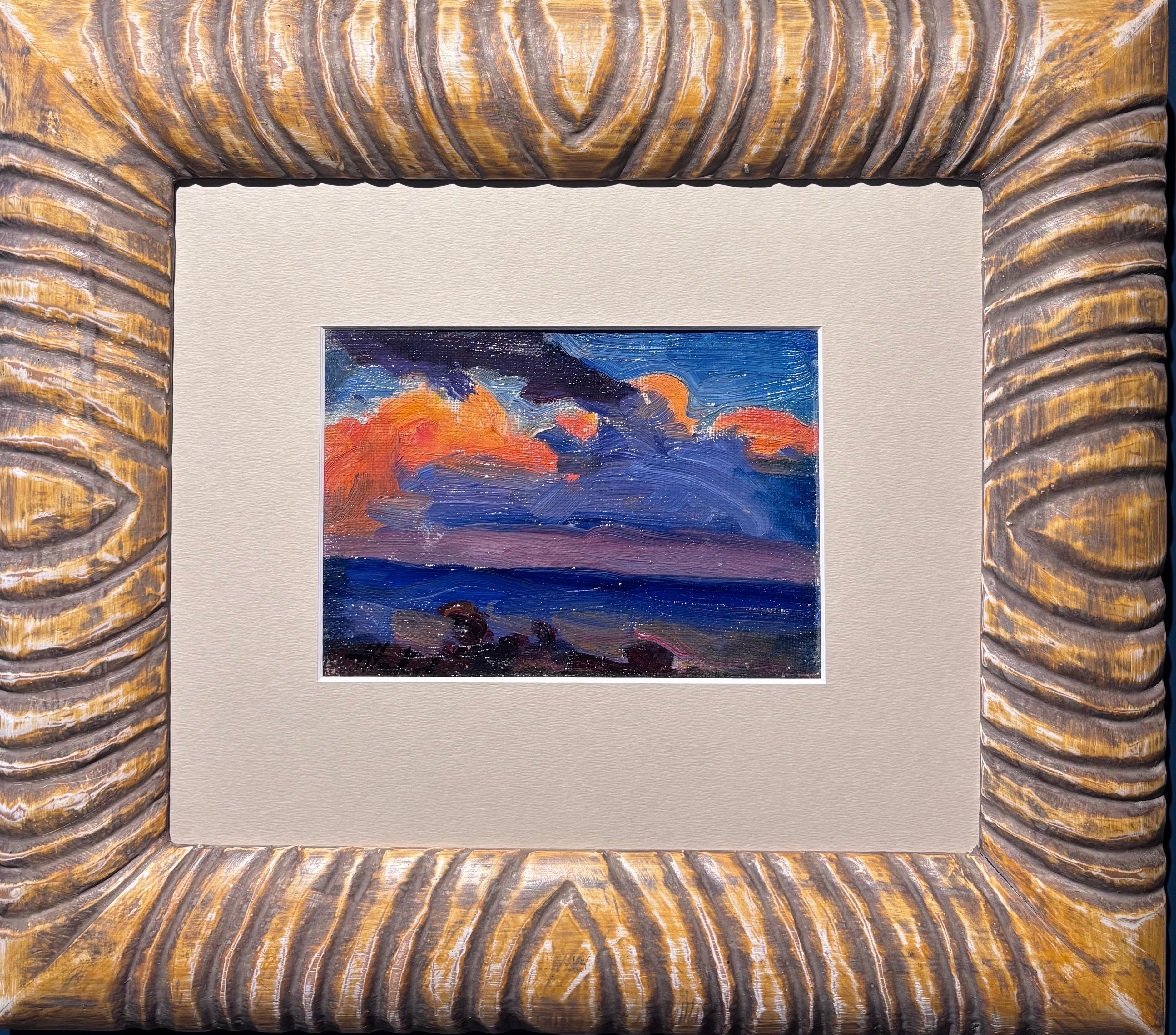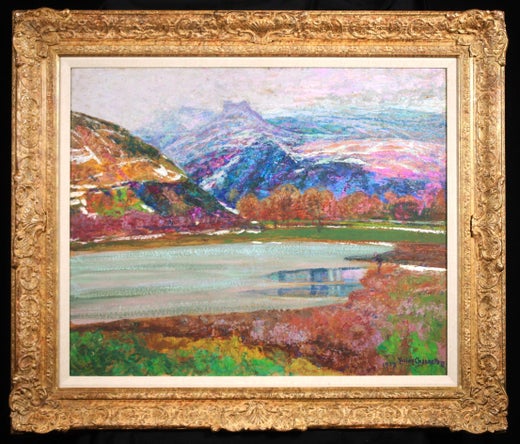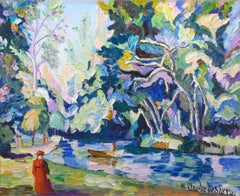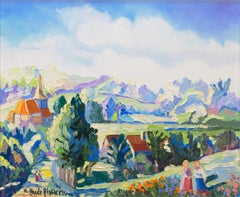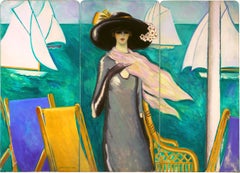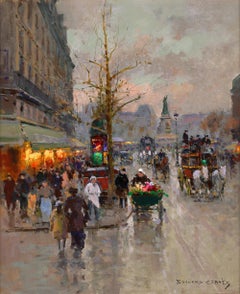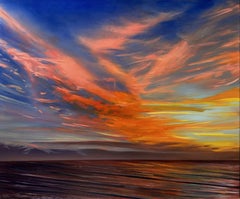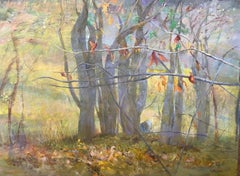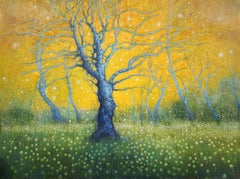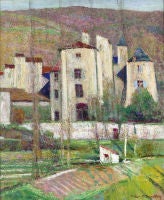
Painting by Victor Charreton, Maison Fonte de La Tour Fondue
View Similar Items
Victor CharretonPainting by Victor Charreton, Maison Fonte de La Tour FondueDated 1910
Dated 1910
About the Item
1864-1937 • French
Maison Fonte de La Tour Fondue
Signed “Victor Charreton” (lower right)
Oil on canvas
This brilliantly hued composition by French landscapist Victor Charreton depicts the blacksmith forge of La Tour Fondue, a castle located in Saint-Amant-Tallende in Auvergne that dates from the 14th century. Charreton depicts this scene with his quintessential post-impressionist style using a vibrant color palette, rich in violets and mauves, with bold, lively brush strokes. Charreton's exceptional ability to bridge the techniques of classical impressionism with fauvism delivers a canvas intense and complex in both composition and execution. Maison Fonte de La Tour Fondue demonstrates fauvism's quintessential color harmonies and bravura brushstrokes while at the same time showing the impact of impressionist aesthetics.
The landscape of Auvergne seemed to haunt Charreton throughout his life and he painted it repeatedly paying special attention to the vibrant and emotive winter landscapes at Morul. In this stunning composition the medieval castle is captured lovingly with an emphasis on the natural effects of light and atmosphere. Seduced by the mystery and grandeur of the old castle, Charreton executed numerous compositions of the site and came to love La Tour Fondue so entirely that he acquired it in 1922. With saturated color and an enthralling composition Charreton effectively communicates the remarkable diversity of the post-impressionist style.
Born near Auvergne into a wealthy family, Charreton had a love for the arts even as a child. He began his career in painting rather late in life, after leaving his initial profession of law. He started exhibiting in 1894 in Lyon, and later that year in Paris at the Salon des Artistes Française, but it wasn’t until he relocated to Paris in 1902 that he was able to devote himself entirely to painting. In 1903 he became one of the founding members of the Salon d'Automne and his work soon gained international attention and critical acclaim. From 1910 forward Charreton was awarded numerous prizes and medals. In 1914, he became a member of the prominent Salon jury, as well as being made a Knight of the Legion of Honor. He participated in many exhibitions in France and abroad and founded the Ecole de Murol with Leon Boudal which attracted many international painters of the neo-impressionist style. In 1931, he inaugurated the Museé Victor Charreton near Lyon.
Today, Charreton is renowned for his landscapes documenting the changing seasons in France as well as in Southern Europe and Africa. He was a true environmentalist, acquiring poplars near La Tour Fondue to save them from being destroyed. Seduced by nature, Charreton embarked on an artistic journey that was incredibly heartfelt, intimate and expressive. His works are incomparable in their technique and execution, making him the quintessential post-impressionist landscape artist at the turn of the century. Charreton's works are housed in some of the most prestigious museums throughout Europe and the United States and are rarely available for acquisition. No collection of modern art should be considered complete without his inclusion.
Dated 1910
Canvas: 29” high x 24” wide
Frame: 35 1/2" high x 30 1/2” wide
Artist’s Museums:
Brooklyn Museum, New York City
Musee d'Art Roger-Quilliot, Clermont-Ferrand, France
Musée d'Orsay, Paris
Museum of Fine Arts, Boston
- Creator:Victor Charreton (1864-1937, French)
- Creation Year:Dated 1910
- Medium:
- Period:
- Condition:Excellent.
- Gallery Location:New Orleans, LA
- Reference Number:Seller: 30-03091stDibs: G13052018617
Victor Charreton
Victor Charreton was the son of a surveyor. He spent his childhood in Chaumont and went to school in Bourgoin. In 1885 he began studying law at Grenoble University and in 1892 became a solicitor at the Lyons Court of Appeal. He had been creating paintings since childhood and was given advice by Ernest Hareux (he did not merely read his treatise on painting, which was highly regarded at the time) and also later by Louis Japy.
In 1902 Charreton gave up his legal career to devote his time to painting. The same year he moved to Paris. Every summer, from 1912 onwards, he would spend time at his house in St-Amant-Tallende near Clermont-Ferrand, where his wife came from. He also traveled abroad — to Algeria in 1905, to Spain and England in 1912 and to Belgium and Holland in 1913 — visiting numerous museums along the way. He also visited Corsica and Germany. He led the life of an aesthete and man of culture and was a lover of poetry and music. In 1914 he was made a Chevalier of the Légion d'Honneur.
Charreton was a landscape artist in the Lyons tradition with a love of sensual impasto. In his works he sought to capture fleeting, momentary effects, like those achieved by the Impressionists: effects at different times of day and in different seasons, such as dusk and snow. As a young man he painted the environs of Bourgoin, but his marriage in 1893 took him to Auvergne where he painted the characteristic landscapes of the region. Landscapes of Auvergne make up approximately two-thirds of Charreton’s output. What became known as the School of Murols, named after a village in Auvergne, was principally formed around him between 1910 and 1925. Skilled in capturing minute changes in the weather, he was also adept at capturing the spirit of new places.
Beside his native Dauphiné and his adopted Auvergne, Charreton was also charmed by the landscapes of the Île-de-France and Paris — Montmartre, the Jardin du Luxembourg and the Parc Montsouris — and also Provence, Creuse and Brittany. However, no trace has been found of his trips abroad. It would be a misjudgment to think that Charreton only painted pretty picture-postcard scenes in the regions he visited; on the contrary, he would seek out the intimist qualities of a place, choosing perhaps a quiet hamlet, with a humble bridge over an anonymous stretch of water, or an ordinary tree outside a tumbledown house.
Charreton would paint blazing autumn landscapes, with a sumptuous color palette, but also favored snowy scenes, their exact chromatic opposite. At the start of his career he would paint dusky scenes and contre-jours in halftones and misty sunsets. As Charreton’s artistic development progressed, he attached more and more importance to light and color. In this respect his work follows on from that of Ravier and, like Guillaumin, it is almost a precursor to Fauvism, or alternatively can be regarded as complicit with it, like the work of Maurice Marinot. Charreton’s brushwork evolved in tandem with his use of color, which became ever more vibrant; for example his fondness for purple hues and later his striking color contrasts. His brushwork became more conspicuous and he would suppress the insignificant details in order to bring out the forms that made up the general composition.
Among art historians Charreton is not ranked alongside the innovators who succeeded the Impressionists, like Gauguin, Seurat, Van Gogh or Cézanne. Older than Matisse, who was himself already by far the eldest of the Fauves, Charreton stopped short of what he considered to be their excesses. He placed himself at the crossroads between two centuries: the end of the century of Impressionism and the start of the leaps made by Fauvism. His life and the major themes in his work are evidence of this, but he decided to be a regional painter; as such, his talent and qualities are clearer than they may otherwise have been if he had chosen a more ambitious career. Beside his painting, he also wrote a play in three acts entitled The Montrouge Well (Le Puits de Montrouge), which was performed in Bourgoin in December 1883.
Charreton made his debut at the Lyons Salon in 1894 with Morning in Montpeyroux. That same year he began exhibiting in Paris at the Salon of the Société des Artistes Français, showing October Evening. He was awarded an honorable mention in 1910, a silver medal in 1912, a gold medal in 1913 and a commendation outside the competition in 1914. He also became a member of the committee and the jury and exhibited there until his death.
Charreton took part in collective exhibitions in France — in Toulouse, Clermont-Ferrand, Roubaix and Bordeaux — and abroad, in New York, Geneva and Barcelona. In 1915 he held a solo exhibition at the Galerie Georges Petit in Paris. He exhibited in New York, Toledo, Pittsburgh, Cleveland and Japan. In 1931 Charreton inaugurated the Musée de Bourgoin by donating around 20 works; the museum then changed its name to the Musée Victor Charreton. He was also one of the founders and general secretary of the Salon d'Automne. In 1972 the Musée de Montmartre organized a posthumous retrospective exhibition of his work; in 1987 and 1989 two more were held in a Paris gallery; then in 2003 the Musée de Bourgoin-Jallieu (in Isère) held in exhibition entitled “Victor Charreton: The Public Collections.”
Find original Victor Charreton art on 1stDibs.
(Biography provided by Leighton Fine Art)
More From This Seller
View All20th Century Post-Impressionist Landscape Paintings
Canvas, Oil
20th Century Post-Impressionist Landscape Paintings
Canvas, Oil
20th Century Post-Impressionist Figurative Paintings
Canvas, Oil, Panel
20th Century Post-Impressionist Landscape Paintings
Canvas, Oil
Early 20th Century Academic Landscape Paintings
Canvas, Oil
20th Century Post-Impressionist Landscape Paintings
Canvas, Oil
You May Also Like
2010s Contemporary Landscape Paintings
Canvas, Oil
2010s Realist Landscape Paintings
Canvas, Oil
21st Century and Contemporary Contemporary Landscape Paintings
Canvas, Oil
21st Century and Contemporary Contemporary Paintings
Canvas, Linen, Oil
2010s Contemporary Figurative Paintings
Canvas, Oil
1960s Abstract Landscape Paintings
Canvas, Oil
Recently Viewed
View AllRead More
Paul Revere Crafted This Silver Coffee Pot 250 Years Ago
Perhaps best known as a Revolutionary War hero, Revere was also an accomplished silversmith, and this pot is now available on 1stDibs.
Degas Portrayed These Exuberant Ukrainian Dancers with ‘Orgies of Color’
Discovered in Parisian cabarets, the performers reenergized the artist’s practice.

